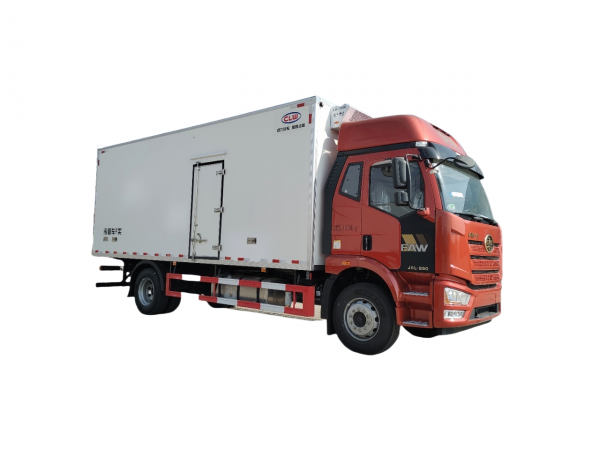Introduction
Truck mounted cranes are essential tools in various industries such as construction, transportation, and logistics. These versatile machines are designed to lift and move heavy loads with precision and efficiency. One crucial factor that significantly impacts the performance and safety of truck mounted cranes is their weight capacity. Understanding the weight limitations of these cranes is vital to ensuring smooth operations and preventing accidents. In this article, we will explore the significance of truck mounted crane weight, its various components, and factors that influence weight capacity.
1. Understanding Truck Mounted Cranes
Truck mounted cranes, also known as boom trucks or mobile cranes, are specialized vehicles that combine the functionality of a crane with the mobility of a truck. These cranes consist of a telescopic boom or an articulating arm mounted on a truck chassis, allowing them to lift and transport heavy loads to different locations. Truck mounted cranes are commonly used in construction sites, warehouses, shipping yards, and other settings where heavy lifting is required.
2. Components of Truck Mounted Cranes
Truck mounted cranes are comprised of several key components that work together to lift and move loads safely and efficiently. The main components of a truck mounted crane include:
- Boom: The boom is the main arm of the crane that extends and retracts to reach the desired height and distance.
- work trucks for sale : Counterweights are added to the rear of the crane to balance the weight of the load being lifted.
- Outriggers: Outriggers are extendable legs that provide stability and support to the crane while lifting heavy loads.
- Hydraulic system: The hydraulic system powers the movement of the boom, outriggers, and other components of the crane.
- Truck chassis: The truck chassis serves as the base of the crane and provides mobility to transport the crane to different job sites.
3. Importance of Weight Capacity
The weight capacity of a truck mounted crane refers to the maximum load that the crane can safely lift and transport. Exceeding the weight capacity of a crane can lead to equipment failure, accidents, and injuries. It is crucial for operators and supervisors to understand and adhere to the weight limitations of the crane to ensure the safety of personnel and equipment. The weight capacity of a crane is determined by various factors, including the structural strength of the crane, the size and configuration of the boom, and the stability provided by the outriggers.
4. Factors Influencing Weight Capacity
Several factors influence the weight capacity of a truck mounted crane, including:
- Crane configuration: The size, type, and configuration of the crane's boom and counterweights play a significant role in determining its weight capacity.
- Outrigger deployment: Proper deployment of outriggers is essential to provide stability and support to the crane while lifting heavy loads. Failure to deploy outriggers correctly can reduce the crane's weight capacity.

- Load distribution: Proper distribution of the load across the crane's boom and counterweights is crucial to prevent overloading and maintain stability.
- Environmental conditions: Factors such as wind speed, terrain, and weather conditions can impact the weight capacity of a crane. Operators must consider these variables when determining the safe working load of the crane.
- Operator skill and experience: Skilled and experienced operators are better equipped to assess load weights, calculate lifting capacities, and operate the crane safely. Training and certification programs are essential to ensure that operators have the knowledge and skills to operate the crane effectively.
5. Safety Considerations
Ensuring the safe operation of a truck mounted crane requires adherence to strict safety protocols and guidelines. Some key safety considerations related to crane weight capacity include:
- Regular inspections: Routine inspections of the crane's components, including the boom, hydraulic system, and outriggers, are essential to identify any signs of wear or damage that could affect the crane's weight capacity.
- Load calculations: Properly calculating the weight of the load and ensuring that it does not exceed the crane's weight capacity is crucial to prevent accidents and equipment failure.
- Operator training: Operators must undergo comprehensive training on crane operations, load calculations, and safety procedures to minimize the risk of accidents and injuries.
- Communication: Clear communication between operators, supervisors, and other personnel on the job site is essential to ensure that everyone is aware of the weight limitations of the crane and can work together safely and efficiently.
6. Conclusion
In conclusion, understanding the weight capacity of a truck mounted crane is essential for safe and efficient operations. By considering the various components and factors that influence weight capacity, operators and supervisors can ensure that the crane is used within its safe working limits. Adhering to strict safety protocols, conducting regular inspections, and providing adequate training to operators are crucial steps in preventing accidents and injuries related to crane weight capacity. Truck mounted cranes are valuable assets in various industries, and by prioritizing safety and compliance with weight limitations, organizations can maximize the productivity and longevity of these essential machines.
